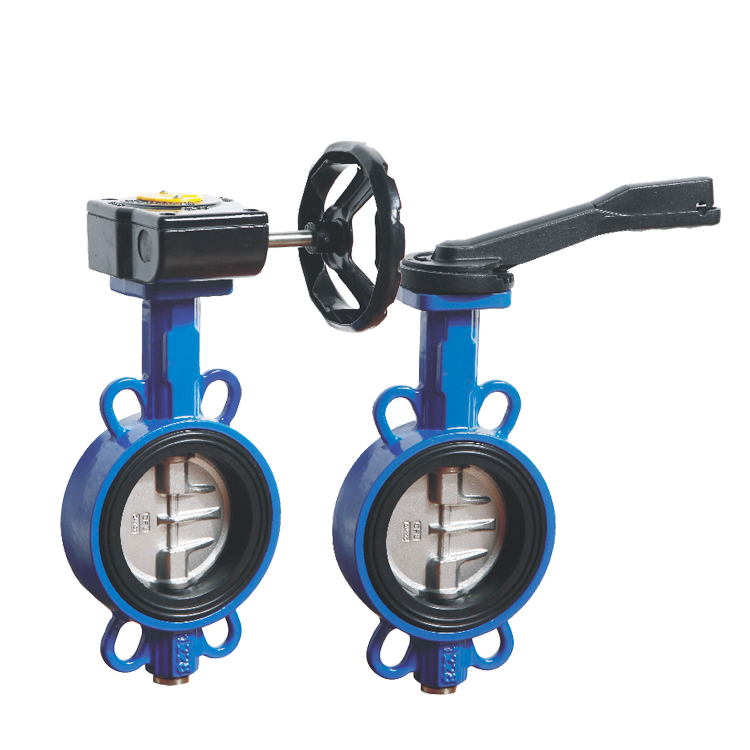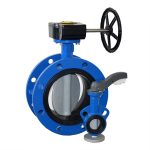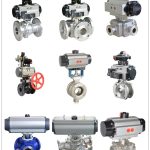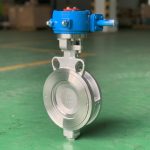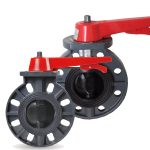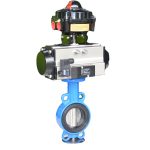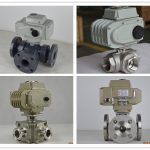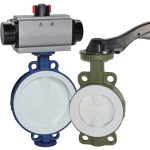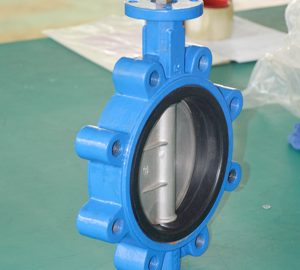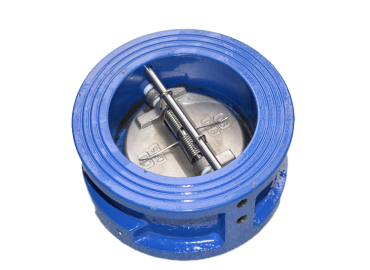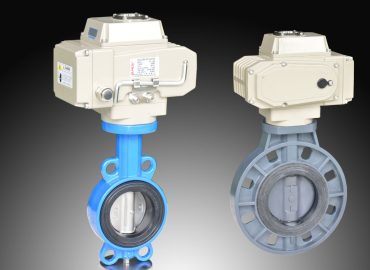Butterfly valves play a crucial role in controlling the flow of liquids and gases in various industries, such as oil and gas, water treatment, and chemical processing. The hand lever is an essential component that allows for the manual opening and closing of these valves, ensuring precise control and smooth operation. However, like any mechanical part, hand levers are subject to wear and tear over time, which can compromise their functionality and even pose safety risks. Recognizing the signs that it’s time to replace a butterfly valve hand lever is vital to maintaining optimal performance and preventing costly downtime or accidents. In this article, we will discuss key indicators that signal the need for a hand lever replacement and offer guidance on choosing the right replacement part.
Introduction
Butterfly valves are integral components in a variety of industries, responsible for regulating the flow of liquids and gases through pipelines. The hand lever, an essential part of the butterfly valve, allows for manual operation, providing precise control and ensuring seamless functioning. However, just like any other mechanical component, hand levers tend to wear out over time, which can negatively impact their performance and even pose safety risks. Identifying the warning signs that it’s time to replace a butterfly valve hand lever is crucial in maintaining optimal valve function and preventing costly downtime or potential hazards. Some key indicators that signal the need for a hand lever replacement include excessive wear and tear, difficulty in operating the valve, corrosion and rust, damaged or broken components, and increased frequency of maintenance and repairs. By paying close attention to these signs and taking prompt action, you can ensure the longevity and reliability of your butterfly valves. Additionally, when selecting a new hand lever, it’s important to consider factors such as material, size, and compatibility with the existing valve, as well as consult with the valve manufacturer or a qualified technician to guarantee proper selection and installation.
Briefly explain the importance of butterfly valves in various industries
Butterfly valves hold significant importance across various industries due to their versatile and efficient flow control capabilities. These valves are commonly used in industries such as oil and gas, water treatment, chemical processing, and food and beverage, among others. Butterfly valves offer several advantages, including a compact design, low maintenance requirements, and cost-effectiveness, making them an ideal choice for managing the flow of liquids and gases through pipelines. They play a critical role in controlling the pressure, temperature, and flow rate of fluids, ensuring safe and efficient operation of industrial processes. Moreover, butterfly valves contribute to the overall reliability and performance of systems, helping industries maintain productivity and adhere to safety standards.
Mention the role of a hand lever in controlling a butterfly valve
The hand lever plays a vital role in controlling a butterfly valve by allowing for manual operation and precise flow regulation. As an essential component of the valve, the hand lever is connected to the valve stem and facilitates the opening and closing of the valve’s disc. When the hand lever is rotated, it turns the disc within the valve, either increasing or decreasing the fluid flow through the pipeline. This manual control mechanism provides operators with the ability to make quick adjustments to flow rates, ensuring accurate and efficient management of process conditions. In addition, hand levers offer a cost-effective and low-maintenance solution for smaller valves and applications that do not require automated or remote control, making them a popular choice in various industries.
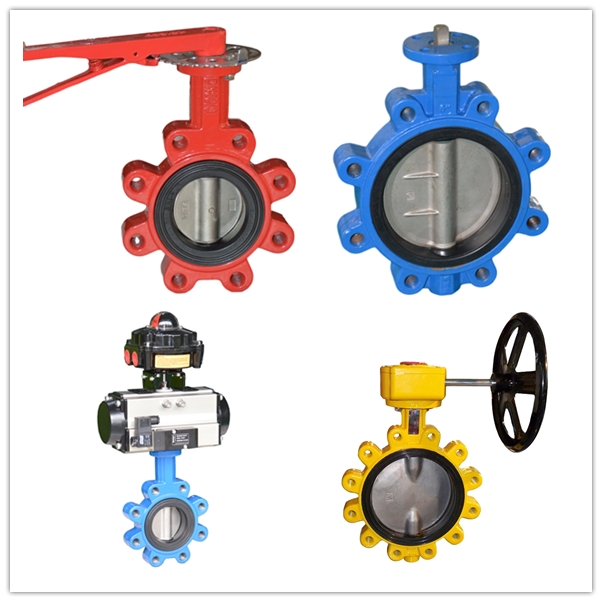
Importance of timely replacement of a butterfly valve hand lever for smooth operation
Timely replacement of a butterfly valve hand lever is crucial for maintaining smooth and efficient operation within industrial processes. A worn-out or damaged hand lever can hinder the precise control of fluid flow, potentially leading to disruptions in production, reduced efficiency, and even safety risks. By proactively identifying signs of wear and tear, corrosion, or damage, operators can address the issue before it escalates into a more serious problem, such as a complete valve failure or leakage. Replacing a faulty hand lever not only restores optimal valve functionality but also minimizes the need for frequent maintenance and repairs, ultimately resulting in cost savings and enhanced system performance. Furthermore, timely hand lever replacement contributes to the overall reliability and longevity of butterfly valves, ensuring that they continue to provide effective flow control in various industries and applications.
Signs That Indicate It’s Time to Replace a Butterfly Valve Hand Lever
Recognizing the signs that indicate it’s time to replace a butterfly valve hand lever is crucial for maintaining smooth and efficient operation within industrial processes. Several key indicators can signal the need for a hand lever replacement, each with its own potential impact on valve performance and safety. Excessive wear and tear on the hand lever, such as visible deformation or surface damage, can compromise its functionality and make it challenging to operate the valve accurately. Difficulty in operating the valve, such as stiffness or jamming, may also suggest that the hand lever is worn out and needs replacement to ensure precise flow control. Corrosion and rust on the hand lever can weaken its structural integrity and lead to malfunctions or even breakage, posing safety risks and potentially causing costly downtime. Damaged or broken components, such as the lever’s connection to the valve stem or the locking mechanism, can result in a complete failure of the hand lever, rendering the butterfly valve inoperable. Lastly, an increased frequency of maintenance and repairs may indicate that the hand lever is nearing the end of its service life, and replacing it can save time and resources in the long run. By closely monitoring these signs and taking prompt action, operators can maintain the reliability and longevity of their butterfly valves, ensuring effective flow control in various industries and applications.
Excessive Wear and Tear
Excessive wear and tear is a common issue that affects mechanical components, including butterfly valve hand levers, over time due to continuous use, friction, and exposure to harsh environments. Signs of wear and tear, such as visible deformation, surface damage, or material loss, can compromise the functionality and efficiency of the affected components. In the case of hand levers, excessive wear can hinder precise flow control and make it difficult to operate the valve accurately. It is crucial for operators to regularly inspect and monitor their equipment for signs of wear and tear, as timely identification and replacement of worn-out components can prevent further damage, maintain optimal performance, and ensure safety in industrial processes. Additionally, implementing proper maintenance practices and using high-quality materials can help prolong the service life of components and reduce the impact of wear and tear.
Difficulty in Operation
Difficulty in operation is a common issue that arises when mechanical components, such as butterfly valve hand levers, become worn out or damaged over time. This can manifest as stiffness, jamming, or the inability to accurately control the valve, leading to disruptions in fluid flow regulation and potentially impacting the efficiency and safety of industrial processes. It is essential for operators to be vigilant in identifying any operational difficulties and addressing them promptly to prevent further complications. Regular inspection, maintenance, and lubrication can help alleviate these issues and ensure smooth operation. However, if difficulties persist despite proper maintenance, it may be necessary to replace the affected component, such as the hand lever, to restore optimal functionality and maintain the reliability and longevity of the butterfly valve system.
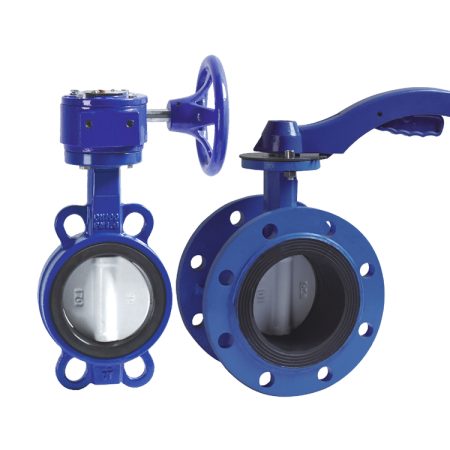
Corrosion and Rust
Corrosion and rust are common challenges faced by mechanical components, including butterfly valve hand levers, particularly when they are exposed to harsh environments or aggressive fluids. These phenomena occur due to chemical reactions between the metal surface and its surrounding environment, leading to material degradation, weakened structural integrity, and reduced functionality. In the case of hand levers, corrosion and rust can compromise their ability to accurately control the valve, posing potential safety risks and negatively impacting industrial processes. To mitigate these issues, it is crucial for operators to regularly inspect and monitor their equipment for signs of corrosion and rust. Implementing preventive measures, such as using corrosion-resistant materials, applying protective coatings, and ensuring proper maintenance practices, can help prolong the service life of components and maintain their performance. If corrosion or rust has already caused significant damage, replacing the affected component may be necessary to restore the functionality and reliability of the butterfly valve system.
Damaged or Broken Components
Damaged or broken components in mechanical systems, such as butterfly valve hand levers, can have serious implications on the functionality, efficiency, and safety of industrial processes. Issues may arise due to factors such as excessive wear and tear, corrosion, manufacturing defects, or improper maintenance, leading to the compromised performance of the affected component. In the case of hand levers, damaged or broken parts, such as the connection to the valve stem or the locking mechanism, can render the butterfly valve inoperable, resulting in disruptions to fluid flow regulation. To prevent such issues, it is crucial for operators to regularly inspect, maintain, and monitor their equipment for signs of damage or malfunction. Timely identification and replacement of damaged or broken components can help maintain optimal performance, minimize downtime, and ensure the safety and reliability of the overall system. Additionally, using high-quality materials and implementing proper maintenance practices can reduce the likelihood of component failure and prolong the service life of mechanical systems.
Frequent Maintenance and Repairs
Frequent maintenance and repairs can be an indication that mechanical components, such as butterfly valve hand levers, are nearing the end of their service life or are experiencing ongoing issues. Constantly addressing these problems not only consumes time and resources but may also lead to disruptions in industrial processes and reduced overall efficiency. To minimize the need for frequent maintenance and repairs, it is essential for operators to implement a proactive approach by regularly inspecting, monitoring, and maintaining their equipment. This helps to identify potential issues early on, allowing for timely replacement or repair of worn-out or damaged components before they escalate into more serious problems. Additionally, using high-quality materials, adhering to proper installation procedures, and following recommended maintenance practices can significantly prolong the service life of mechanical components and ensure their reliable performance. By reducing the frequency of maintenance and repairs, operators can optimize their processes, minimize downtime, and achieve cost savings in the long run.
Choosing the Right Replacement Hand Lever
Selecting the right replacement hand lever for a butterfly valve is a critical decision that can significantly impact the functionality, efficiency, and safety of an industrial process. When choosing a replacement hand lever, operators should consider several factors to ensure optimal performance and longevity. First, it is essential to verify compatibility with the existing valve system, taking into account factors such as valve size, type, and stem connection. Choosing a hand lever made from high-quality, corrosion-resistant materials, such as stainless steel or aluminum alloy, can help prolong its service life and reduce the risk of rust and corrosion-related issues. The hand lever’s design should provide ergonomic operation, ensuring ease of use and accurate flow control while minimizing operator fatigue. Additionally, opting for a hand lever with a reliable locking mechanism can enhance safety by preventing unintentional valve adjustments during operation.
It is also important to consider the environmental conditions in which the hand lever will be used, as this may influence the choice of materials and protective coatings. For instance, in corrosive or high-temperature environments, selecting a hand lever with specialized coatings or materials designed to withstand these conditions can help maintain its integrity and performance. Furthermore, consulting with trusted manufacturers and suppliers can provide valuable insights and recommendations based on their expertise and experience in the industry.
Finally, proper installation and maintenance practices are crucial for ensuring the long-term performance and reliability of the replacement hand lever. Following the manufacturer’s guidelines for installation and maintenance can help prevent premature wear, damage, or malfunction, ultimately reducing the need for frequent repairs or replacements. By carefully evaluating these factors and making an informed decision, operators can select the most suitable replacement hand lever for their butterfly valve system, ensuring effective flow control and maintaining the efficiency and safety of their industrial processes.
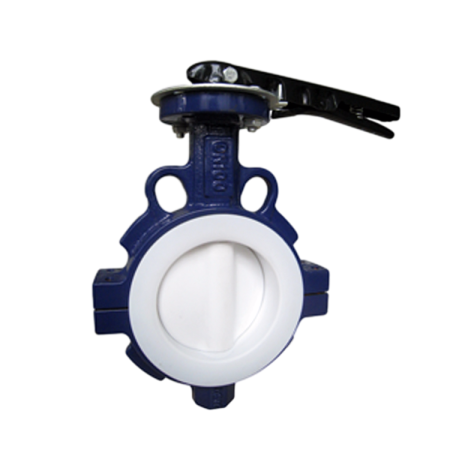
Discuss factors to consider when selecting a new hand lever, such as material, size, and compatibility with the existing valve
When selecting a new hand lever for a butterfly valve, it is vital to consider several factors to ensure optimal performance, durability, and compatibility with the existing valve system. Material choice plays a crucial role in the hand lever’s longevity and resistance to wear, corrosion, and rust. Opting for high-quality, corrosion-resistant materials like stainless steel or aluminum alloy can enhance the hand lever’s durability and minimize maintenance requirements. Size is another important factor, as the hand lever must be appropriately sized to provide adequate torque for precise flow control and ease of operation. Ensuring compatibility with the existing valve is essential to maintain seamless integration and prevent potential issues during operation. This involves considering the valve type, stem connection, and any specific requirements unique to the valve system. By carefully evaluating these factors, operators can make an informed decision when selecting a new hand lever, ultimately contributing to the efficiency, safety, and reliability of their industrial processes.
Mention the importance of consulting with the valve manufacturer or a qualified technician to ensure proper selection and installation
Consulting with the valve manufacturer or a qualified technician is an essential step in ensuring proper selection and installation of a new hand lever for a butterfly valve. These experts possess in-depth knowledge and experience regarding valve systems, materials, and compatibility requirements, which can prove invaluable in making an informed decision. By seeking their guidance, operators can avoid potential issues stemming from improper selection, such as inadequate torque, compatibility problems, or reduced durability. Additionally, proper installation is critical to the performance and longevity of the hand lever, and consulting with professionals can help ensure adherence to best practices and manufacturer guidelines. Ultimately, engaging with the valve manufacturer or a qualified technician not only facilitates the correct selection of a new hand lever but also contributes to the overall efficiency, safety, and reliability of the industrial process it serves.
Conclusion
Butterfly valve hand levers play a crucial role in controlling and regulating the flow of fluids in various industrial processes. Over time, these levers can experience wear and tear, corrosion, or damage, leading to compromised performance and potential safety risks. Knowing when it’s time to replace a butterfly valve hand lever is essential for maintaining the efficiency, reliability, and safety of your industrial process.
There are several signs that indicate it may be time to replace your butterfly valve hand lever:
- Visible signs of wear or damage: If you notice visible signs of wear, such as cracks, deformation, or excessive corrosion on the hand lever, it may be time to consider a replacement.
- Difficulty in operation: A worn-out or damaged hand lever may become increasingly difficult to operate, leading to inaccurate flow control or requiring excessive force to turn the valve.
- Frequent maintenance and repairs: If you find yourself constantly repairing or maintaining the hand lever due to recurring issues, it might be more cost-effective to replace it with a new, more reliable component.
- Incompatibility with upgraded valve systems: If you have upgraded your butterfly valve system, the existing hand lever may no longer be compatible, necessitating a replacement that better aligns with the new system.
- Changes in environmental conditions: If the hand lever’s operating environment has changed, such as increased exposure to corrosive substances or extreme temperatures, it may be necessary to replace it with one made from more suitable materials or with specialized coatings.
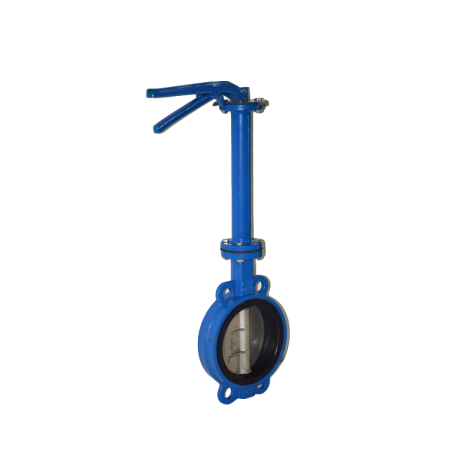
When faced with the decision to replace a wafer butterfly valve hand lever, it is essential to consider factors such as material, size, and compatibility with the existing valve system. Consulting with the valve manufacturer or a qualified technician can provide valuable guidance in selecting the right hand lever and ensuring proper installation.
Regular inspection, monitoring, and maintenance of your butterfly valve hand levers can help identify potential issues early on, allowing for timely replacement or repair before they escalate into more serious problems. By proactively addressing these issues and selecting the most suitable replacement hand lever, you can ensure the continued efficiency, safety, and reliability of your industrial processes.
In conclusion, being aware of the signs that indicate it’s time to replace a butterfly valve hand lever and taking appropriate action can significantly contribute to the smooth operation of your industrial process. By making informed decisions, consulting with professionals, and implementing proper maintenance practices, you can optimize your processes, minimize downtime, and achieve cost savings in the long run.
Recap the importance of timely hand lever replacement for optimal valve performance and safety
In summary, timely hand lever replacement is crucial for maintaining optimal valve performance and ensuring the safety of industrial processes. A worn-out or damaged hand lever can lead to compromised flow control, operational difficulties, and potential safety risks. By regularly inspecting, monitoring, and maintaining your butterfly valve hand levers, you can identify potential issues early on and take appropriate action to replace or repair them before they escalate into more serious problems. Timely hand lever replacement not only contributes to the smooth operation of your industrial process but also helps minimize downtime, reduce maintenance costs, and enhance overall safety. By being proactive in addressing hand lever issues and making informed decisions, you can optimize your processes and ensure their efficient, reliable, and safe operation.
Encourage regular inspections and maintenance to extend the life of butterfly valves and their hand levers
Regular inspections and maintenance play a vital role in extending the life of pneumatic butterfly valves and their hand levers, ensuring optimal performance and reliability of industrial processes. By proactively examining and addressing potential issues, operators can prevent premature wear, corrosion, and damage to these crucial components. A well-maintained valve system not only improves the efficiency of the process but also reduces the likelihood of unexpected downtime and costly repairs. Additionally, adhering to manufacturer-recommended maintenance practices and guidelines can significantly prolong the service life of butterfly valves and their hand levers, leading to cost savings in the long run. In essence, by prioritizing regular inspections and maintenance, operators can optimize the performance of their valve systems, enhance safety, and maximize the return on their investment.


